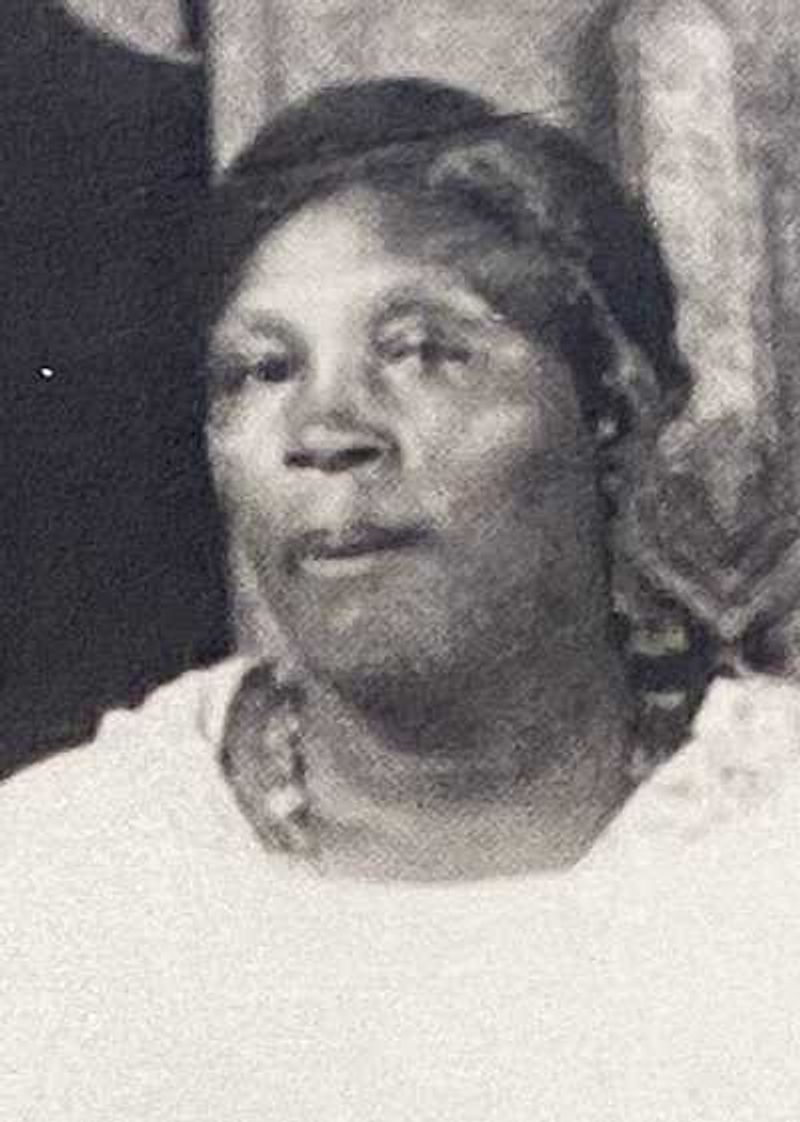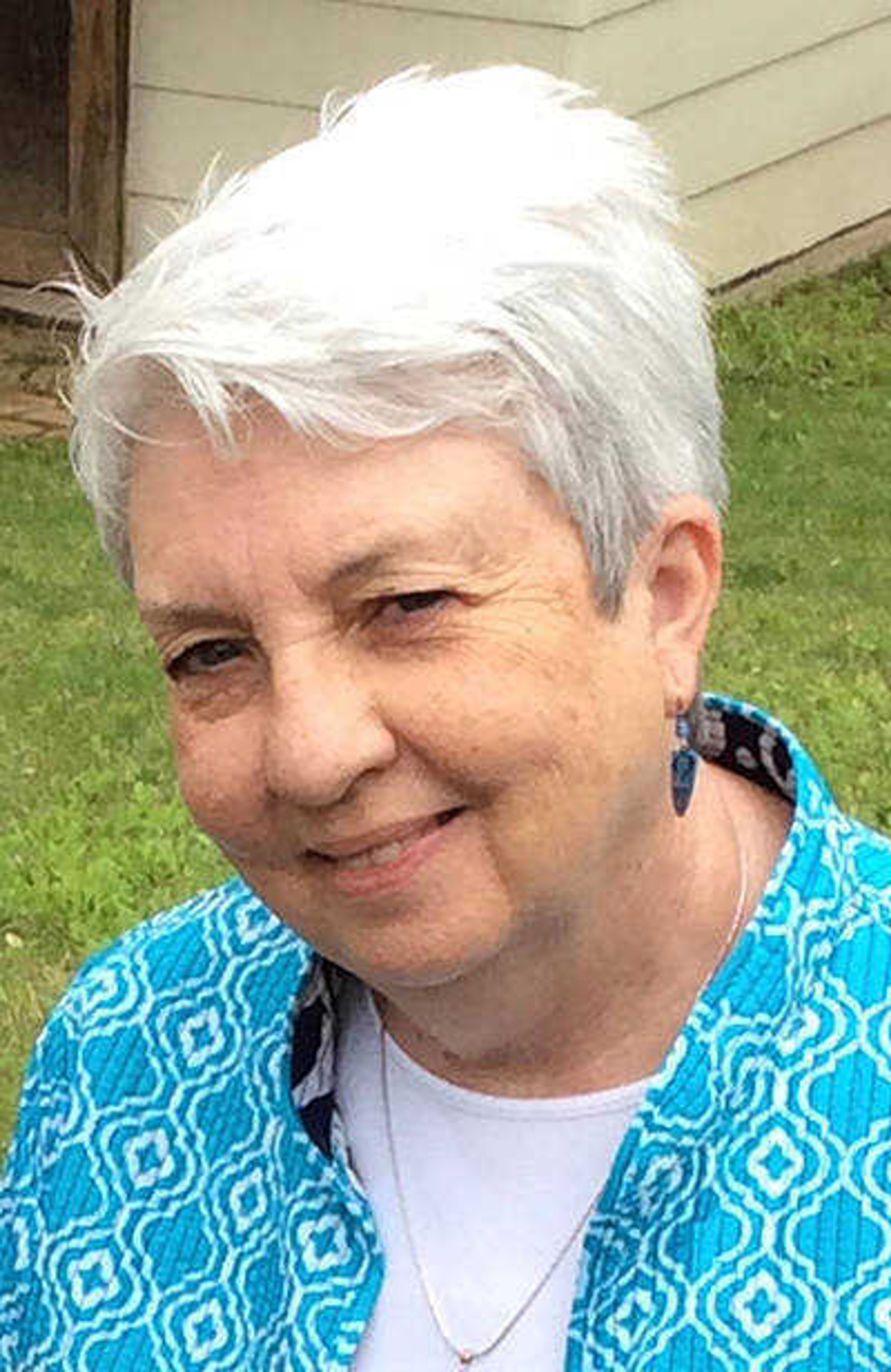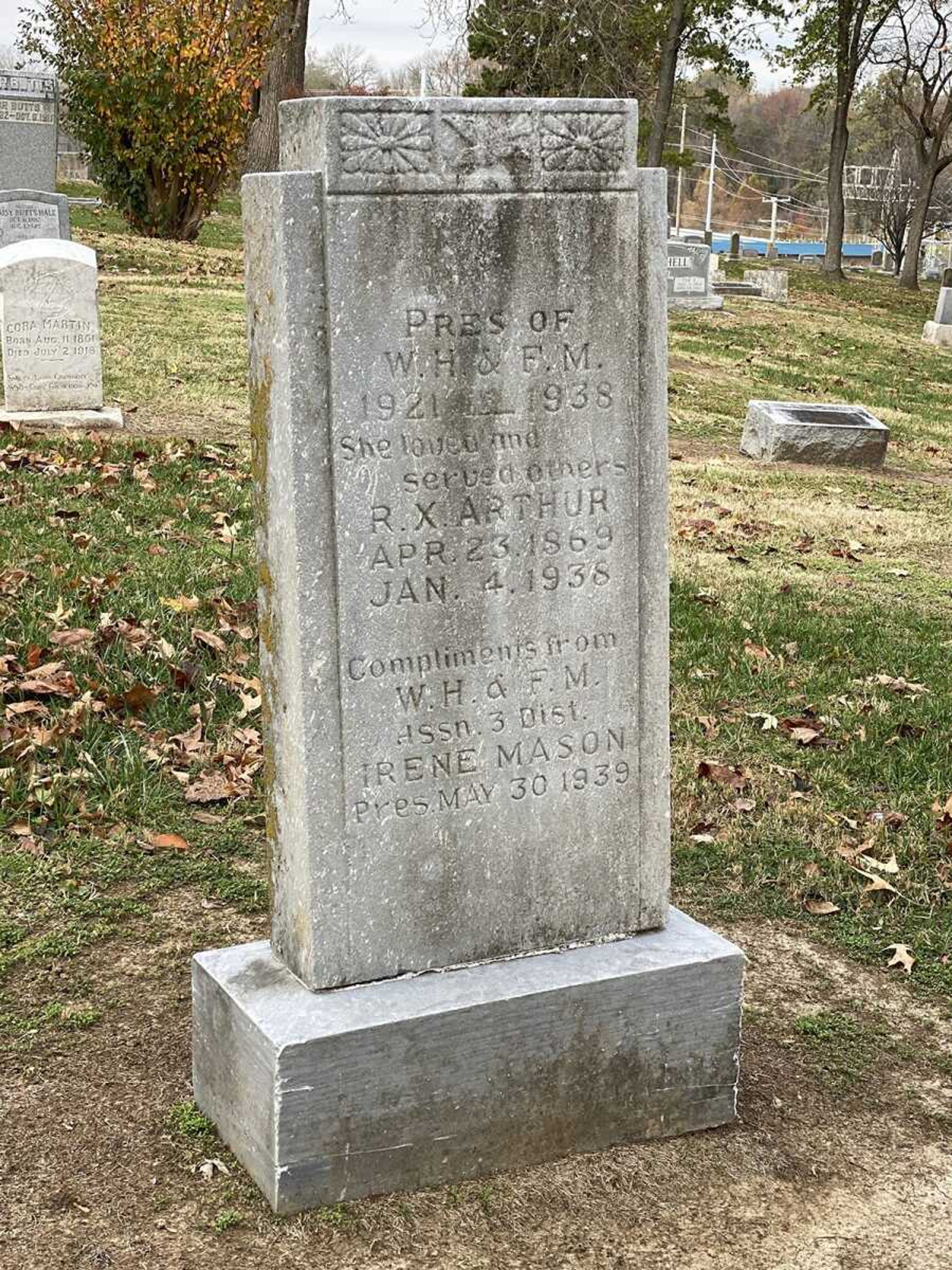Life of service -- R.X. Arthur
The City of Cape Girardeau maintains three "marble farms" (Ivan Doig's humorous description of a cemetery) -- the Lorimier cemeteries (Old and New) and Fairmount. The adage "Size is everything!" is evident in Cape Girardeau's cemetery culture. The largest, tallest monuments convey legacies of wealth, leadership and power. Our marble farms are a dense stock of headstones, representing thousands of individual and family legacies...
The City of Cape Girardeau maintains three "marble farms" (Ivan Doig's humorous description of a cemetery) -- the Lorimier cemeteries (Old and New) and Fairmount. The adage "Size is everything!" is evident in Cape Girardeau's cemetery culture. The largest, tallest monuments convey legacies of wealth, leadership and power. Our marble farms are a dense stock of headstones, representing thousands of individual and family legacies.

Sparsity of headstones in Fairmount's Section C contrasts with surrounding sections. Yet, records reveal Section C is densely packed with graves -- side to side, and in some cases, grave on grave. A remnant of our city's segregated history, Section C was designated in 1890 as the burial plot for Black citizens and for "paupers" regardless of race. Fifty years later, funeral director Frank Sparks declared grave space in Section C "exhausted" and begged for expanded space for Black citizens.
Most Section C graves are not marked, but where headstones exist, they are modest, inscribed simply with a name, birth and death date. In contrast, the marker for R.X. Arthur is distinctive in size, decoratively carved and inscribed with abbreviated references. Who was this and what legacy should be remembered?
Rose Xenia Arthur (nee Jones) was born in 1869, near Dutchtown, the eldest child of Charles and Amanda Jones, who migrated to the area following Emancipation. The Jones clan -- parents and seven siblings-- are legendary in Cape Girardeau's Black Baptist history, and Rose, no less. In almost every reference (in life and death) she was known as "R.X." A deeply-committed member of Second Missionary Baptist Church, she served as teacher, musician, organizer and missionary. Surrounded by preachers -- married to the Rev. S.M. Arthur, the adoptive mother of the Rev. E.A. Conklin and sister-in-law of the Rev. Paul Parks -- R.X.'s life was a sermon beyond the pulpit.
From 1921, R.X. was elected to fill positions of denominational leadership. For 17 years, she traveled quarterly (by train, steamboat and motor car) throughout the region and state to hold meetings at fledgling Black Baptist churches of the Third District Missionary Baptist Association. She trained others (women and men) to organize Sunday schools, Baptist Youth People Unions and missionary societies as the Black Missionary Baptist denomination grew. As a confident, gifted Black woman, her exemplary leadership motivated like-minded women. A Cobb School professor said, "Mrs. Arthur is a great worker at home and on the field as a missionary and an uplifting factor of her people."
It is no surprise R.X. was also an activist in her hometown. She was listed as director or officer for nearly every civic organization in the Black community of Cape Girardeau County, circa 1920s and '30s. An advocate for social issues and political involvement, she was an elected officer of Cape Girardeau's first Civic League, the original local NAACP and the Black chapter of the Red Cross.
To meet the financial needs of her large family, R.X.'s sisters, daughters and nieces toiled in the hot, heavy labor of providing laundry service for private families. Her home on North Sprigg regularly welcomed and lodged visiting professors, preachers, dignitaries and old friends.
Life had its share of sorrows -- seven of R.X.'s eight children preceded her in death, two different house fires nearly destroyed their home in the early 1930s, financial struggles and health issues curtailed activities in the last months of her life. Certainly, that "She loved and served others" is an apt epithet for this notable woman.
Connect with the Southeast Missourian Newsroom:
For corrections to this story or other insights for the editor, click here. To submit a letter to the editor, click here. To learn about the Southeast Missourian’s AI Policy, click here.











